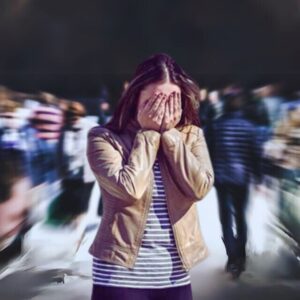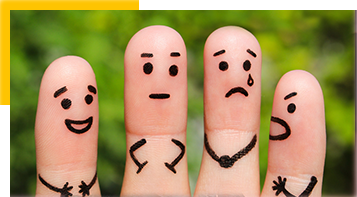Exposure Therapy Treatment Hospital Hebbal, Whitfield, Bangalore, Gurugam in Delhi
Exposure therapy is a type of psychological treatment that is commonly used to help patients overcome anxiety disorders, phobias, and other conditions that involve excessive fear or avoidance behavior. The main goal of exposure therapy is to reduce or eliminate the fear and anxiety associated with a particular stimulus or situation by gradually exposing the patient to it in a controlled and therapeutic manner.
If you’re looking for exposure therapy treatment hospitals, you have options in several prominent locations across India. Whether you’re in Bangalore, Whitfield, Gurugram, Delhi, or Hebbal, there are reputable hospitals offering exposure therapy to help you overcome your fears and anxieties.
In Bangalore, Hebbal stands out as a well-known location with dedicated exposure therapy treatment hospitals. These clinics are staffed with experienced professionals who create treatment plans to suit each patient’s unique needs. Whether it’s fear of flying, social anxiety, or post-traumatic stress disorder, these hospitals provide a safe environment for controlled exposure to anxiety triggers, helping patients gradually build resilience.
Whitfield, a booming area of Bangalore, is another location where you can find quality Exposure Therapy treatment. Exposure therapy treatment hospitals in Whitfield provide a variety of mental health services to address a wide range of psychological issues.
Gurugram is home to some of the most advanced healthcare facilities in India. There are specialized hospitals that provide exposure therapy as part of their overall mental health services. Patients can expect a multidisciplinary approach to treatment that will result in the best possible outcomes.
Delhi itself offers a range of exposure therapy treatment hospitals, making them accessible to those in the capital city and surrounding areas. These hospitals use the latest techniques and therapies to help patients regain control over their lives.
No matter where you are in these cities, you can get specialized exposure therapy treatment to help you conquer your fears and regain control over your life. Seek professional help today and take the first step towards a brighter, anxiety-free future.

Exposure Therapy for OCD, Social Anxiety, and Phobia
 What Is Exposure Therapy?
What Is Exposure Therapy?
![]()
Exposure therapy is a psychological treatment that was developed to help people confront their fears. When people are fearful of something, they tend to avoid the feared objects, activities or situations. Although this avoidance might help reduce feelings of fear in the short term, over the long term it may worsen the condition.
 How is Exposure Therapy done?
How is Exposure Therapy done?
![]()
You’ll be recommended a program of exposure therapy in order to help break the pattern of avoidance and fear. In this form of therapy, psychologists create a safe environment in which to ‘expose’ individuals to the things they fear and avoid. The exposure to the feared objects, activities or situations in a safe environment helps reduce fear and decrease avoidance.
 When is Exposure Therapy helpful?
When is Exposure Therapy helpful?
![]()
Exposure therapy has been scientifically demonstrated to be a helpful treatment or treatment component for a range of problems, including:
- Phobias
- Panic Disorder
- Social Anxiety Disorder
- Obsessive-Compulsive Disorder
- Posttraumatic Stress Disorder
- Generalized Anxiety Disorder
 Types of Exposure Therapy
Types of Exposure Therapy
![]()
In-vivo exposure:
In-vivo exposure:
Directly facing a feared object, situation or activity in real life. For example, someone with a fear of water might be instructed to swim, or someone with social anxiety might be instructed to give a speech in front of an audience.

Imaginal exposure
Imaginal exposure
Vividly imagining the feared object, situation or activity. For example, someone with Posttraumatic Stress Disorder might be asked to recall and describe his or her traumatic experience in order to reduce feelings of fear.

Virtual reality exposure
Virtual reality exposure
In some cases, virtual reality technology can be used when in-vivo exposure is not practical. For example, someone with a fear of flying might take a virtual flight, using equipment that provides the sights, sound, and smell of an airplane.

Interoceptive exposure
Interoceptive exposure
Deliberately bringing on physical sensations that are harmless, yet feared. For example, someone with Panic Disorder might be instructed to run in place in order to make his or her heart speed up, and therefore learn that this sensation is not dangerous.
 Exposure therapy is thought to help in several ways, including:?
Exposure therapy is thought to help in several ways, including:?
![]()
Behavioral Therapy has successfully been used to treat a large number of conditions. It’s considered to be extremely effective. About 75 percent of people who enter Cognitive Behavioral Therapy experience some benefits from treatment.

Habituation: Over time, people find that their reactions to feared objects or situations decrease.

Extinction: Exposure can help weaken previously learned associations between feared objects, activities or situations and bad outcomes.

Self-efficacy: Exposure can help show the client that he/she is capable of confronting his/her fears and can manage the feelings of anxiety.

Emotional processing: During exposure, the client can learn to attach new, more realistic beliefs about feared objects, activities or situations, and can become more comfortable with the experience of fear.

